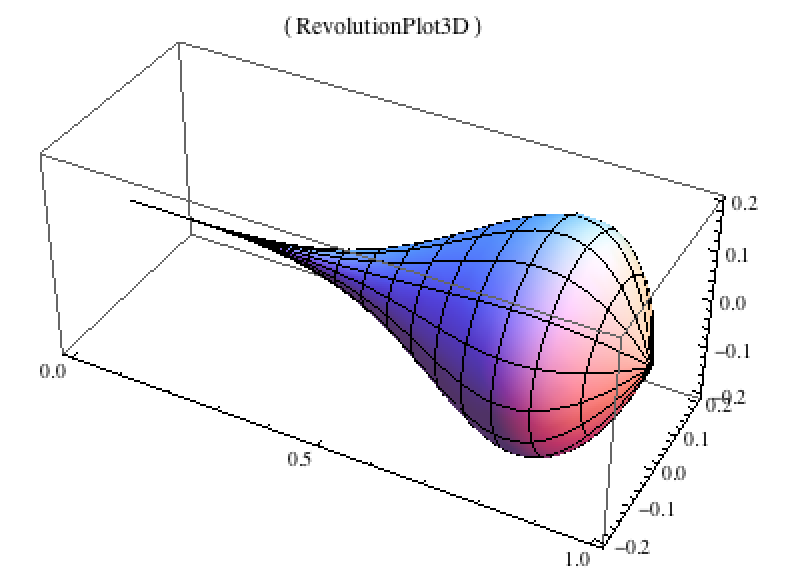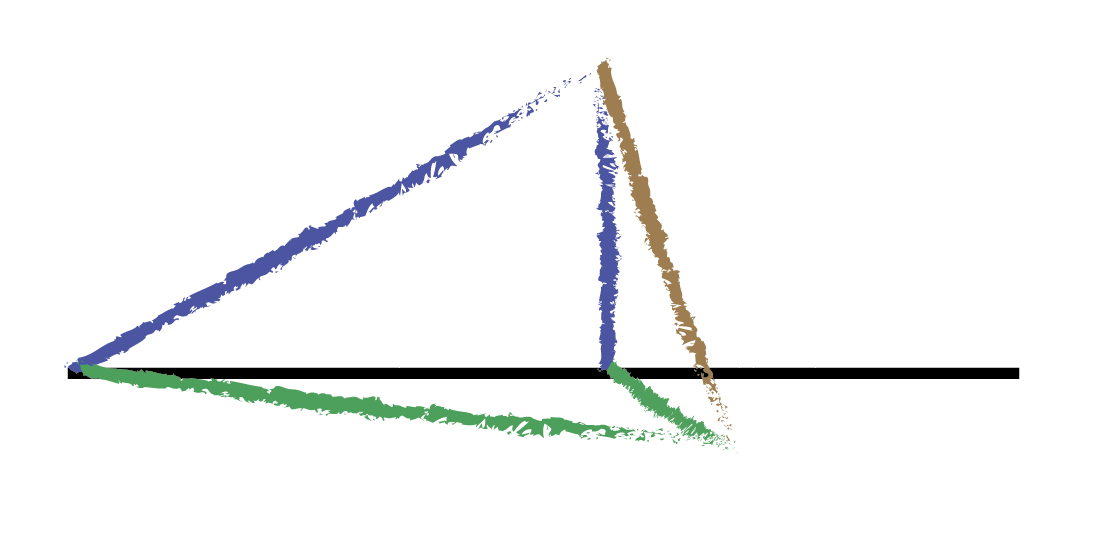Hi,
The question is how to generate {x,y,z} coordinates from parametric coordinates. As an example, I have this "eye ball" plot, which is parametric. I've attached a notebook with that code.
RevolutionPlot3D[(t^4 - t^7), {t, 0, 1}, RevolutionAxis -> {1, 0, 0},
PlotLabel -> {{"RevolutionPlot3D"}}]
t =.
height = Table[t^4 - t^7, {t, 0, 1, 0.1}]
It makes sense to me to take any given t (t is the independent variable for the parametric coordinates) and the resulting height (generated by the function), and make use of the fact that it has a 90-degree angle to the axis, to figure angles for that right triangle.
At that stage it would be possible to know the {x,y,z} for any t (where x = t), when they are orthogonal to the t/x-axis.
Difficulty is when the rotation around the t/x-axis is something other than 1/2, 1, 3/2 or 2 radians. That would introduce another triangle, where the rotation would help place the y & z.
Am unsure how best to do this, and am hoping Mathematica has something already built. Thanks for any help that you can provide,
Greg


 Attachments:
Attachments: